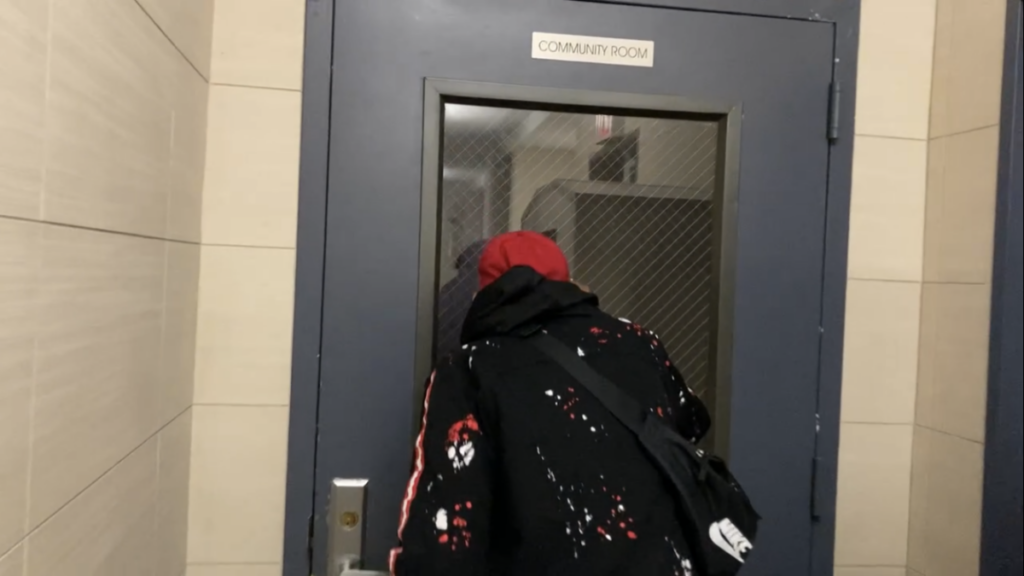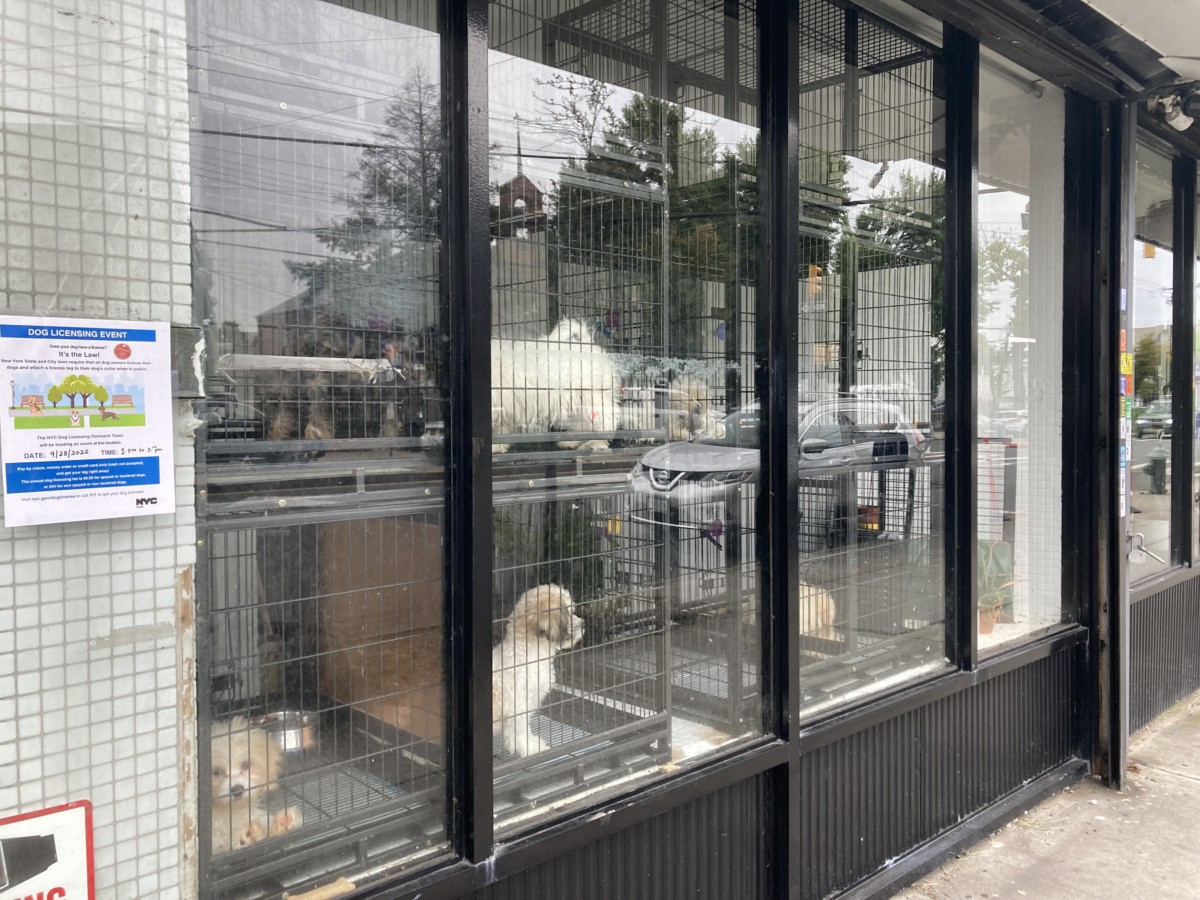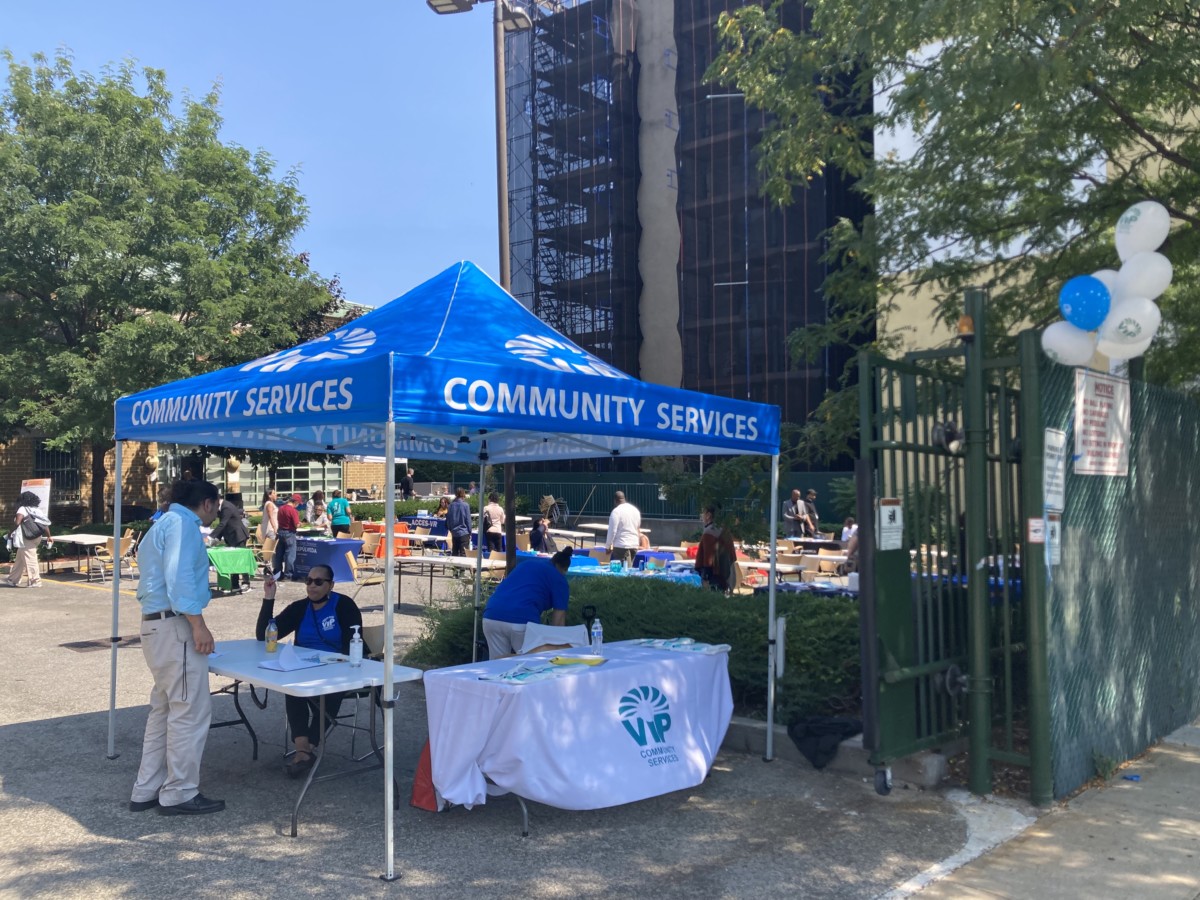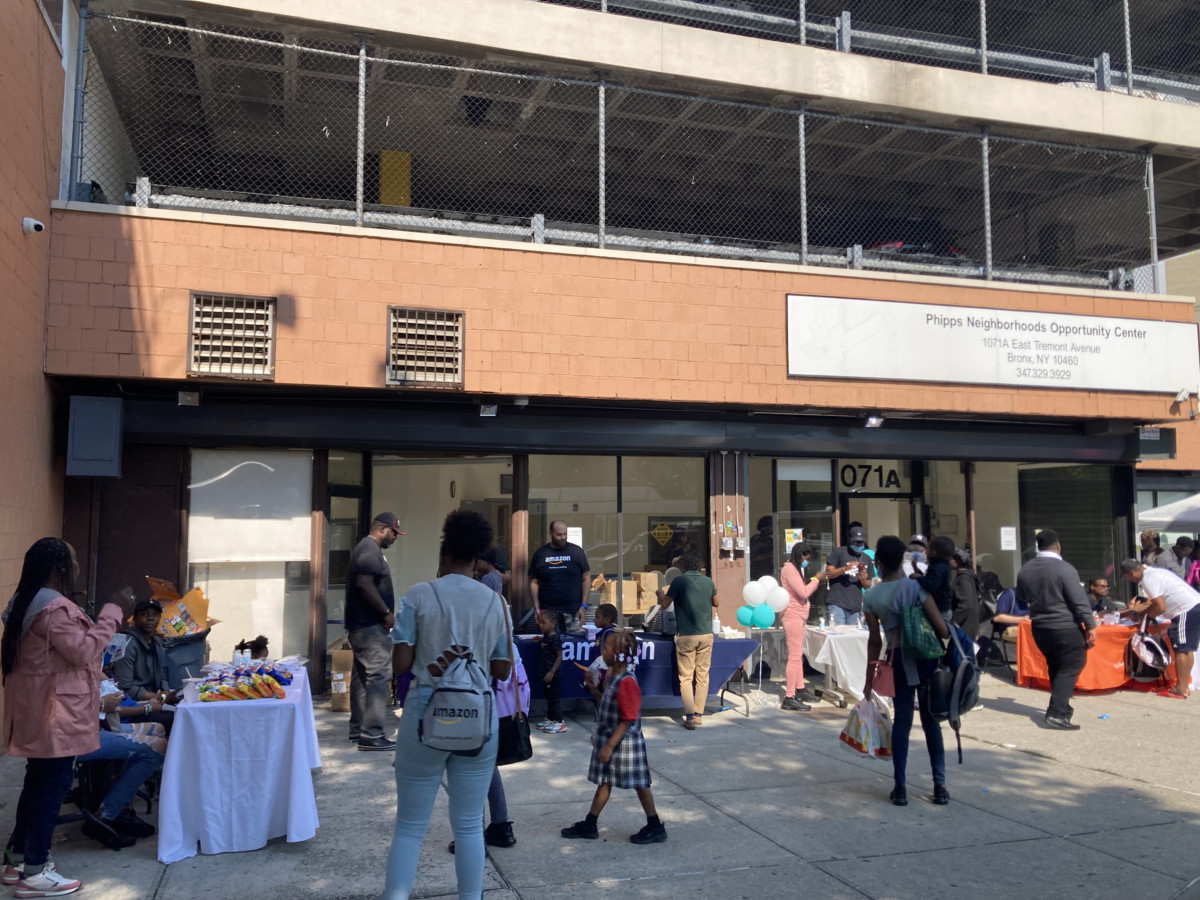The energy was electric. Breakdancers glided and exploded through the air to the beat, shuffling their feet, twisting on their backs and spinning on their heads. The crowd nodded and awed in a breakdancing battle on the top floor of an inconspicuous Queens apartment building on a Sunday back in October. It’s a scene familiar to the Bronx, where breakdancing, called breaking in the community, was pioneered in the 1970s. The sport has come a long way since.
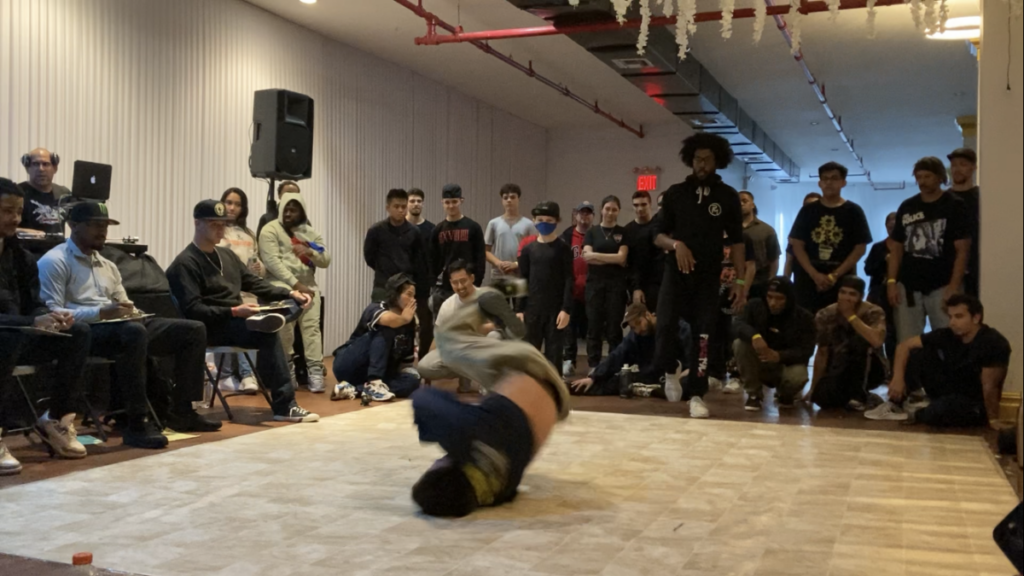
Last November, 32 top breakers from around the world battled it out at the Red Bull BC World Final at the Hammerstein Ballroom in New York City, but breaking’s biggest stage is still to come. Next year, for the first time ever, breaking will be a medal event at the Summer Olympics in Paris 2024.
After the success of the sport’s debut at the 2018 Youth Olympics in Buenos Aires, 32 athletes, made up of 16 B-boys (breakers in the male category) and 16 B-girls (female category) will compete in the 2024 Olympics.
“The first time is always the hardest. And this is the first time breaking is going to go to the Olympics. So this is a big task,” said Bojin Chen, Head of the Breaking Division of the World Sport Dance Federation. Chen works on organizing the Olympic event, from logistics of qualifications to the judging panels.
The first official qualifying event, the World Championship in Belgium, will be held in September, but breakers are already battling in competitions around the world to rack up points to compete on the teams of their respective countries. A country will be able to send a maximum of four athletes, two per category, to compete.
“(It’s) like having a vision of mine come true,” said Michael Holman, artist and hip-hop impresario who now sits on the American team’s legacy committee for the Olympics. “I was the first person to put that idea (of breaking as a stand-alone sport) forward back in 1983.”
Each breaker brings their own style to the floor. Chen, a Taiwanese prize-winning breaker on his own accord incorporates the steady and focused elements of martial arts into his battles, while Bri Pritchard, B-Girl Snap1, emphasizes strength in her explosive style as a “blow-up head.”
“When they announced that it was going to be an Olympic sport, I was obviously over the moon and I knew that that’s what I wanted to devote this portion of my life to,” said Pritchard. Sitting on the floor of a gym post-workout in wide green pants and a black cap, Pritchard applied muscle cream onto her tattooed arms as we spoke. She had been about to fly off to the World Championship for Breaking 2022 in Seoul, South Korea the next day.
Pritchard had the second highest number of qualifying points from competitions amongst American b-girls when she made Team USA in summer 2022, though that does not guarantee her an Olympic spot for 2024. Countries will qualify with points earned through the official breaking competitions by their breakers. Team USA is as of right now made up of eight adult breakers, whereas a maximum of two per category will be sent to the Olympics.
Before gaining popularity worldwide, breaking, which has commonly been called breakdancing in the media to the discontent of many breakers, made its way from the Bronx to downtown New York in the early 80s.
“My generation was the beginning of bringing hip-hop downtown and to the world,” said Holman, who played a large role in bringing hip-hop to the national and then international stage in the 1980s. He created and hosted the first Hip-Hop television show, Graffiti Rock, was the first writer to use the word “hip-hop” in a publication and managed the famous break crews, Rock Steady Crew and the New York City Breakers.
He recalled, “In the beginning, we were looking to share what was going on uptown with the rest of the downtown art scene, music scene, not so much turning on the rest of the country and the world. That wasn’t the initial goal. But that started to become more and more obvious.”
One of the ways he introduced breaking to downtown New York was at the East Village club Negril, where he hosted breaking performances, “When I was having the performances at Negril and Rock Steady Crew was performing every Thursday, I wanted the audience to see a battle – a B-boy battle.” That’s when the Floor Masters came into play, to battle Rock Steady, and Holman was inspired to form a new crew: the New York City Breakers as “an all star power move crew.”
“It was thrilling to have such an impact on the culture,” Holman reflected. Today, he sits on the advisory board at the Universal Hip Hop Museum in the South Bronx, “If (the museum) was anywhere else, it would seem very contrived and false, it needs to be in the birthplace (of Hip Hop).”
While the “b” in “b-boys” and “b-girls” is most commonly understood to stand for “break,” which, like breaking itself does, refers to the beat breaks in music which hip-hop popularized, some have also argued that the “b” might stand for “Bronx.”
Dr. Mark Naison, Professor of African American Studies and History at Fordham University, said though the exact origins of breaking might be uncertain, “we know that Herc had parties at 1520 and Echo Park.”
In a red brick apartment building, which blends into the rest of the buildings that line Sedgwick Avenue in the West Bronx, is a recreation center largely recognized as the birthplace of hip-hop. Lauree Myer, who goes by Trixie, claims to be one of the first-generation breakers from the 1970s,.
“Dancing puts a smile on faces. It’s enjoyment, you know,” Trixie said.
He remembers attending DJ Kool Herc’s earliest parties at 1520 Sedgwik. Herc is credited with developing “breakbeats,” where dancers had “breaks” in the music to drop to the floor and show off their moves. These “breaks” became a foundation of Hip-Hop. At Sedgwick Avenue in the South-West Bronx, he DJ-ed at neighborhood parties, including the legendary 1973 “Back to School Jam” with his sister Cindy Campbell.
Naison said he’s “wary of a single origin story,” since there have always been different musical elements at play in the Bronx, including Latin influence. Nonetheless, when parties like Sedgwick Avenue’s were moved outside, break battles took place and breaking crews formed, battling each other.
“Nobody really came out to see us,” Trixie said of the early parties, “Nobody really took the time to say, ‘what are the kids doing over here?’” By the time breaking took off downtown, he had stopped dancing.
“Once a b-boy or b-girl, always a b-boy,” said Ereina Valencia, who goes by Honey Rockwell, a B-Girl and former Rocksteady Crew Member.
“I come from the Bronx and never forget where I come from,” she said. Valencia entered the world of breaking from gymnastics in 1994. She’s appeared in tv and film and toured internationally in an Off-Broadway Hip-Hop show. Today, she teaches at her dance studio in Georgia, where she lives with her husband, whom she met through breaking, and their children. Referring to breaking’s worldwide impact, she said,“It’s so awesome to see how this dance with so much swag has been able to be bigger than us.”
When Pritchard was younger, “maybe about 10 years ago, I took it upon myself to go to the Bronx, because it’s important to me to see where what I love comes from.” She noted, “Fortunately right now our pioneers – a lot of them are still alive. So now is actually a very good time for us to learn all this knowledge.”
When she started practicing the sport, it was “because I’ve always been an athlete, always,” Pritchard said. As such she had always dreamed of being on Team USA for the Olympics, though it was something she thought she had given up when she stopped playing Varsity sports in high school to pursue breaking instead.
“Because at the time, breaking was nowhere near going to the Olympics,” Pritchard said. Still, she “fell in love” with the sport when she was 17, when she saw people practicing in her high school and on TV, “My Dad did it in the 80s back when it was popular.”
Pritchard noted that it’s a lengthy process of “trying to qualify to get to qualifiers,” with the likelihood of competing in the Olympics being “very slim for any of us.”
That’s why some breakers like Steffon Artis, or B-Boy Pop, who organized the breaking event in Queens said that garnering a spot in the U.S. Olympics Team seems like a far-off dream, “It’s a lot of your own money that goes into it if you’re not backed.”
Like Pritchard, Artis’ Dad had also been a breaker, which is who he learned from in the Bronx. When he was younger, he would perform in Times Square with other breakers for the crowds that formed. Being from the Bronx, he said, “It’s a heavy thing to carry, it kinda puts on extra pressure.”
Pritchard is currently taking a break from working for the Alaska Army National Guard to focus on breaking and finishing her Bachelor’s degree in Kinesiology, which she did in December, “It’s non-stop. There’s no break or anything, it’s very mentally and physically exhausting. So if I was to make it to the Olympics, that would be just, I mean, a dream come true.”
Pritchard also notes that “The sport is evolving. There are a lot more younger girls coming up that have what it took me years to get.”
Breaking’s debut on the Olympic stage gives younger generations of breakers new career goals to aim for, “It makes you more confident that ‘I can do this in the future,’” said 18-year old B-Girl Nix, Nicole Chernecher, from Brooklyn’s Breaking Academy. 15-year-old B-Girl Dylan Brod added that “breaking gets a lot of credit as a dance style but not everyone sees it as a sport,” and hopes that breaking will now be more widely recognized as such.
For Chen, the biggest positive outcome of the new Olympics event is that “it’s not only for the countries that we always see, like the U.S. or Japan. It gives a lot of breakers that might not have the opportunity to go to such a big competition the chance to.” To ensure that the Olympic event will not be a one-time occurrence for the sport, he has already submitted the sport’s applications for the 2028 Summer Olympics, which will be hosted in Los Angeles. Assuming of course, 2024’s debut sees success.


